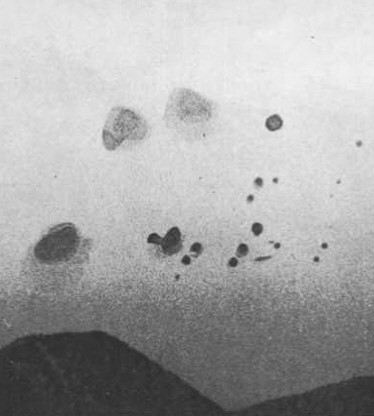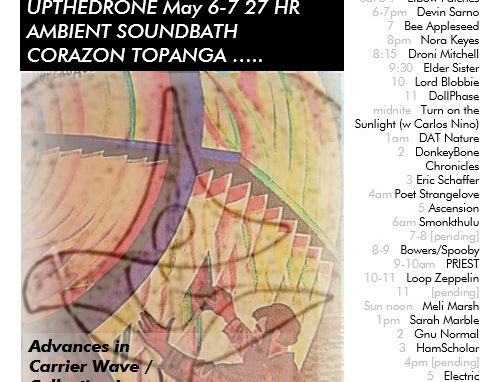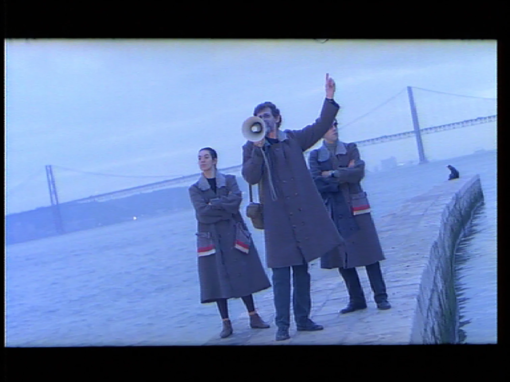Once upon a time, we ran across a hyper-obscure but insanely cool book, The Cosmic Pulse of Life, by Trevor Constable.
Now, in the UFO scene, where Jacque Vallee’s model of “Interdimensional Entities” is considered an outlier hypothesis, Constable put forth an idea that gets even less attention. An idea at least backed up by some evidence.
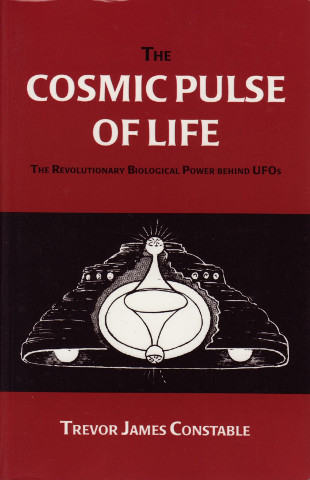
Back in the late 50s, Constable and companions did a thing, they would take an infrared camera out into the Mojave desert at night. One would meditate, and when they felt something in the sky, they would point in that general direction. The other would take snapshots with infrared film. The resulting photos, as selected for Constable’s book, at any rate, showed evocative, blobby, internally differentiated objects looking vaguely like single-celled organisms — paramecia or amoebas — which Constable dubbed “sky critters”. An intriguing result, if somewhat less than a truly “scientific” method.
Constable was convinced that many, if not all, UFOs were in fact living forms of plasma existing in the atmosphere, not hard-metal spaceships stopping off from Alpha Centauri for a beer and a burger.
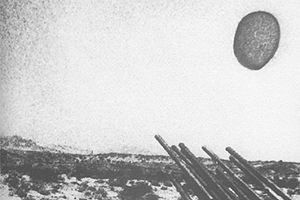
Constable, by the way, was a Reichian, so it was a foregone conclusion his findings would stay isolated in the fringe of the fringe. He also experimented with Reich’s “Cloudbuster” tubes. (Constable also speculated that UFOs containing occupants were materializations from an “aetheric” form or “density” as well.)
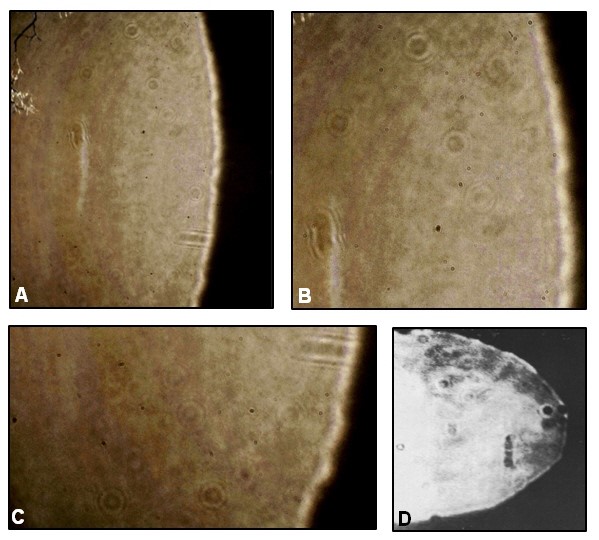

Periodically a similar speculation surfaces in other UFO literature. Here is a recent attempt by a UK gent named Hayes at replicating Constable’s photos, from a Reichian publication, The Journal of Psychiatric Orgone Therapy, “Positive Findings on Constable’s Orgonotic Bio-Forms”.
From Hayes’ decade of attempts at replicating Constable:
A couple of Haye’s stills:
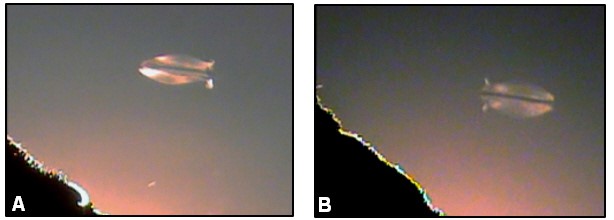
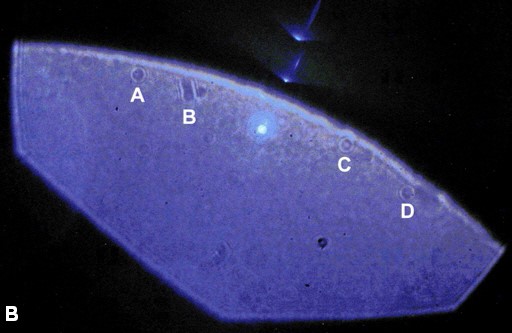
Now a research result on the self-organizing behaviors of lab-generated plasmas (highly energized gases, typically electrons and protons), totally unconnected with this fringe tradition, seems to lend support to this once utterly outre idea, as summarized in New Scientist:
Physicists have created blobs of gaseous plasma that can grow, replicate and communicate – fulfilling most of the traditional requirements for biological cells. Without inherited material they cannot be described as alive, but the researchers believe these curious spheres may offer a radical new explanation for how life began.
Most biologists think living cells arose out of a complex and lengthy evolution of chemicals that took millions of years, beginning with simple molecules through amino acids, primitive proteins and finally forming an organised structure. But if Mircea Sanduloviciu and his colleagues at Cuza University in Romania are right, the theory may have to be completely revised. They say cell-like self-organisation can occur in a few microseconds.
… A distinct boundary layer that confines and separates an object from its environment is one of the four main criteria generally used to define living cells. Sanduloviciu decided to find out if his cells met the other criteria: the ability to replicate, to communicate information, and to metabolise and grow.
He found that the spheres could replicate by splitting into two. Under the right conditions they also got bigger, taking up neutral argon atoms and splitting them into ions and electrons to replenish their boundary layers.
Finally, they could communicate information by emitting electromagnetic energy, making the atoms within other spheres vibrate at a particular frequency. The spheres are not the only self-organising systems to meet all of these requirements. But they are the first gaseous “cells”.
Sanduloviciu even thinks they could have been the first cells on Earth, arising within electric storms. “The emergence of such spheres seems likely to be a prerequisite for biochemical evolution,” he says.
Original study here – “Cell-like space charge configurations formed by selforganization in laboratory,” Erzilia Lozneanu and Mircea Sanduloviciu. Department of Plasma Physics Complexity Science Group Al. I. Cuza University.
From Lozneanu and Sanduloviciu’s conclusion:
The identification of the physical causes of pattern formation in plasmas reveals the presence of a mechanism of self-organization that substantially advances the knowledge concerning the creation of complex systems in general. Based on phenomena such as local self-enhancement and long-range inhibition this scenario of self-organization shows striking similarities to those considered to lie at the heart of biological pattern formation. Therefore for biologists the described selforganization scenario could be interesting accepting that this can explain the emergence of a primitive organism that could be a prerequisite condition for making possible the more complex chemical reactions. The space charges arrangement and the intrinsic nonlinear mechanism that ensure the “viability” of the CSCC are premises very probable necessary for a further chemical evolution into a organism revealing features as those proper to a contemporary cell. Additionally the described self-organization scenario suggest a new insight concerning the actual origin of various biological events as the morphogenesis, the polarization, the acquisition of nutriments and the mechanism by which electrical signals control the rhythm of a biochemical system. Clearly a major task of experimental studies are necessary to verify whether or not a spark produced at a positive electrode immersed in a chemical reactive plasma could initiate an “universal” self-organization process whose final product can eventually explain the origin of the (sic) life. Such experiments are at present performed in our laboratories.

